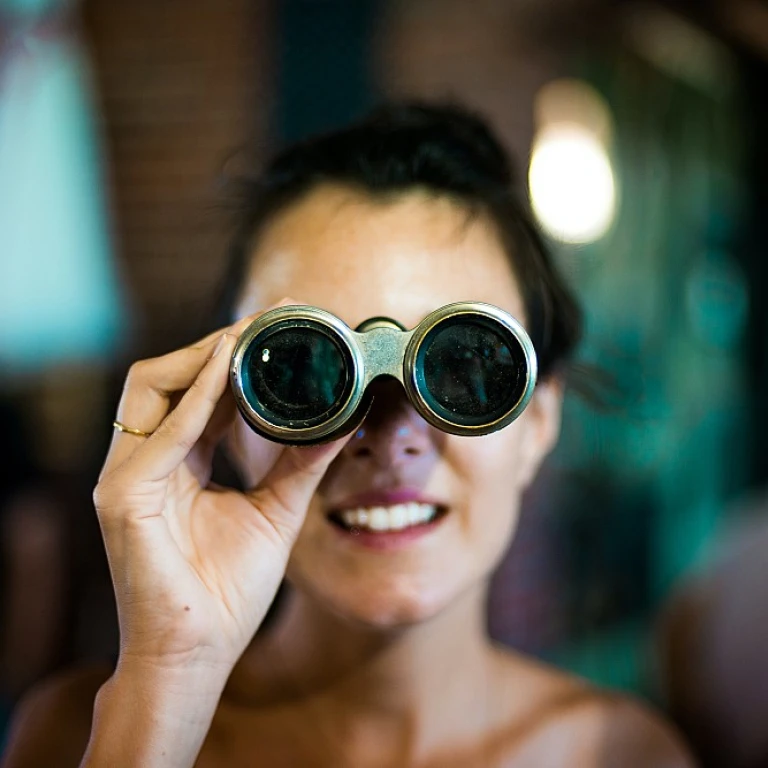Understanding Employee Experience Touchpoints
The Importance of Employee Interaction Moments
Employee experience interaction moments serve as the pivotal points throughout an employee's journey in an organization. These moments significantly impact how employees perceive their roles, colleagues, and the overall culture within their workplace. Understanding and effectively managing these interaction moments enhances not only employee satisfaction but also the organization’s success.
Every moment that an employee engages with their work environment, from recruitment and onboarding to career development and daily interactions, contributes to their overall experience. By focusing on these key interactions, organizations can build a comprehensive understanding of what drives employee satisfaction and retention.
To get started, it's essential to identify these critical interaction moments. They can occur at various stages of the employee journey and vary in impact. Some common examples include hiring processes, training sessions, performance reviews, and even informal interactions between colleagues. However, each organization may have unique touchpoints that require attention.
Organizations aiming to improve employee experience should consider the variety of elements that come into play. As you map out these moments, ponder the emotional and physical journey each employee embarks upon. This specialized focus on interaction can unearth areas ripe for enhancement and innovation.
For a deeper dive into enhancing the employee experience through carefully crafted interaction moments, you may explore insights in this
meaningful employee experience guide.
Mapping the Employee Journey
Charting the Path to Employee Satisfaction
Mapping the employee journey is a critical step in understanding how to enhance the overall experience within an organization. This process involves identifying and analyzing the various stages and interactions an employee has from recruitment to exit. By doing so, companies can pinpoint areas that need improvement and create strategies to foster a more engaging and fulfilling work environment.
The journey begins with recruitment, where potential employees form their first impressions of the company. This initial stage is crucial in setting expectations and establishing a positive relationship. As discussed in the onboarding section, the first touchpoint is vital in ensuring new hires feel welcomed and supported.
Beyond onboarding, mapping the employee journey involves evaluating day-to-day experiences, opportunities for growth, and the overall company culture. Cultivating a positive company culture, as highlighted in another section, plays a significant role in maintaining employee satisfaction and retention.
To effectively map the employee journey, organizations should employ innovative initiatives that address the unique needs and challenges of their workforce. By leveraging these strategies, companies can boost employee experience and create a thriving workplace. For more insights on innovative initiatives, visit
boosting employee experience with innovative initiatives.
Ultimately, a well-mapped employee journey not only enhances individual satisfaction but also contributes to the overall success of the organization. By continuously evaluating and refining these touchpoints, companies can ensure they are meeting the evolving needs of their employees.
Onboarding: The First Touchpoint
Getting Onboard the Right Way
When we talk about the pivotal moments that shape an employee's journey, the initial onboarding process is undoubtedly one of the most crucial. It's at this stage that new hires begin to form their first impressions of the company, which can significantly influence their engagement levels and future performance.
A well-structured onboarding process goes beyond the basic paperwork and introductions. It should be designed to immerse new employees into the company culture, while also providing them with the tools and resources they need to succeed in their roles. Personalizing this phase not only helps new hires feel welcomed but also shows that the organization values them as individuals.
When mapping the employee journey, consider how the onboarding phase can be optimized to address potential challenges and opportunities. This could involve creating a comprehensive orientation program, pairing new employees with mentors, and ensuring regular check-ins during their first months. By fostering a seamless transition into the workplace, companies can set the stage for a positive employee experience from day one.
For actionable insights on understanding these crucial moments, you might find it beneficial to dive into employee experience metrics. These metrics can provide a framework for assessing and improving onboarding strategies, ensuring that new employees feel supported and engaged from the outset.
In understanding these critical
employee experience metrics, organizations can create a more seamless and supportive onboarding process, ultimately contributing to a more satisfied and productive workforce.
Cultivating a Positive Company Culture
Creating a Collaborative Environment
Cultivating a positive company culture is a crucial touchpoint that significantly impacts employee experience. It's not just about having fun perks or occasional team-building exercises. Instead, it dives deeper into fostering an environment where employees feel valued, respected, and supported in their roles.
An inclusive atmosphere can lead to increased collaboration among team members, which often results in enhanced productivity and innovation. To achieve this, organizations must adopt transparent communication practices, encourage feedback, and make concerted efforts to address any concerns or suggestions raised by employees. This proactive approach not only boosts morale but also strengthens the sense of belonging within the company.
Another key aspect of cultivating a positive culture lies in recognizing and celebrating achievements. Recognition can take many forms, from a simple "thank you" to formal awards like "Employee of the Month." These acknowledgments can motivate employees, promote loyalty, and potentially reduce turnover rates.
Developing trust through leadership is also paramount. Leaders who demonstrate empathy, integrity, and open-mindedness can nurture a culture where employees feel empowered to take initiatives and take pride in their work. In such environments, mistakes are seen as opportunities to learn and grow, rather than failures, creating a safe space for innovation.
In conclusion, creating a strong company culture is an ongoing commitment that requires intentional actions from every level of the organization. By prioritizing employee well-being, companies can establish a harmonious workplace, ultimately leading to a more fulfilling employee experience.
Continuous Development and Engagement
Fostering Growth and Sustained Involvement
In the ever-evolving landscape of employee experience, creating a culture of continuous development and engagement is pivotal. This step in the employee journey emphasizes the importance of providing employees with opportunities to grow, learn, and feel connected to their organization. When companies prioritize development, they're not just filling skills gaps but cultivating a workforce that is motivated and committed.
Continuous development involves more than just training sessions and workshops. It encompasses a holistic approach that supports professional growth through mentorship, diverse learning platforms, and flexible career paths. Personal development plans tailored to individual ambitions can ignite passion and drive, giving employees a clear vision of their future within the company. Resources such as online courses or sponsored certifications can further enhance their skill sets.
Equally significant is fostering a culture of sustained involvement. Engagement goes beyond employee satisfaction; it’s about nurturing a sense of belonging and purpose. Initiatives including regular feedback loops, employee recognition programs, and collaborative problem-solving sessions can strengthen bonds within teams and across the organization. When employees are actively engaged, they are more likely to contribute unique ideas and demonstrate high levels of innovation.
Encouraging an open dialogue where employees feel heard and valued is another key aspect. An environment that promotes transparency and actively seeks employee input can bridge the gap between leadership and staff. As explored in earlier discussions on cultivating a positive company culture, open communication channels play a crucial role in reinforcing an engaged and cohesive workplace.
Ultimately, by investing in the continuous development and engagement of employees, companies not only improve individual performance but also create a robust, adaptable, and future-ready organization.
Improving Work-Life Balance
Paving the Way for Work-Life Integration
Achieving a balanced work-life integration is increasingly becoming a critical component in enhancing overall employee experience. This balance isn't just about reducing working hours; it's about creating an environment where employees can seamlessly blend their professional and personal lives. A robust work-life balance contributes significantly to employee satisfaction, commitment, and productivity, forming a critical touchpoint in the employee's journey within a company.
Several factors come into play when focusing on improving work-life balance. One essential element is the flexibility in work arrangements. Offering options such as remote work, adjustable start and stop times, and compressed workweeks allow employees to manage their personal responsibilities while fulfilling work obligations. This flexibility demonstrates a company's trust in its employees and empowers them to deliver their best, both professionally and personally.
The integration of technology strategically supports this balance. Tools and platforms, when used effectively, can optimize employee workflows, reduce administrative burdens, and foster effective communication, all of which promote a healthier work-life dynamic. However, it's crucial for organizations to ensure that technology doesn't lead to an 'always-on' culture, which can negate the benefits of work-life enhancements.
Organizations should also encourage a culture of openness and active dialogue, where employees feel comfortable discussing their needs and challenges related to work-life balance. Management must be trained to listen and respond to these needs, offering solutions that are genuine and considerate. This ties directly into cultivating a positive company culture, which sets a foundational tone across all touchpoints of the employee experience.
Organizations investing in a positive organizational culture and continuous development are better equipped to offer solutions that effectively support work-life balance, thus proving their commitment to valuing their employees beyond their output. The journey of enhancing work-life integration is ongoing, requiring a dynamic approach that considers an ever-evolving work environment. By paying attention to this crucial aspect, companies can significantly improve not only employee satisfaction but also overall organizational success.








